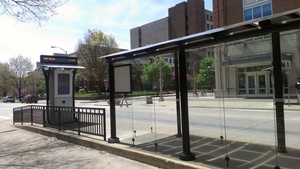| Champaign-Urbana Mass Transit District | 1101 E University Av | Urbana | IL | 61802 | 217-384-8188 | http://www.cumtd.com/ |
The Champaign-Urbana Mass Transit District (CUMTD) is the system of buses that run around Urbana, Champaign, and the UIUC campus. Most of the buses are labeled by color and number (Yellow 1, Red 2, Lavender 3, etc.), although there are exceptions (Illini 22, Air Bus 27, etc.). The buses have regular, repeating schedules for Weekdays, Weekday nights, Saturday days, Saturday nights, Sunday days, and Sunday nights. The maps and schedules can be found here: http://www.cumtd.com/maps-and-schedules and at many of the bus shelters. Paper copies of the full schedules can be found on the buses near the driver, or printed from a PDF that can be downloaded from their website. It is also a simple matter to plan a route using the tip planner on their website (http://www.cumtd.com/maps-and-schedules/trip-planner) or Google Maps. Schedules vary when school is not in session and during Holidays.
New kiosks are being installed to communicate exactly which buses will be departing from a given stop and in how many minutes, and this information is also accessible both on the organization’s website and through a text messaging service. Various mobile apps are available.
Those who want to ride the buses should keep their fare, bus pass, or student ID on hand so that it is ready when boarding. Information on bus fares can be found here: http://www.cumtd.com/riding/faresandpasses. Although the buses are usually punctual, riders should get to their bus stop several minutes early in case of early arrival or time discrepencies. The buses are handicapped-accessible, and the driver can "kneel" the bus and lower a ramp if necessary. Riders with bikes can place them on the bike racks on the front of the bus, but as they disembark, should inform the driver that they need to retrieve their bike before the bus departs.
 The CUMTD Transit Plaza bus stop.
The CUMTD Transit Plaza bus stop.
History
Before CUMTD was formed by a referendum in 1970, buses had operated in Champaign-Urbana intermittently since 1901, when a small bus line was established that operated for 11 months. In 1925, buses operated alongside streetcars run by Illinois Power and Light Company. Eleven years later, both the buses and trolley lines were bought by a subsidiary of General Motors, which replaced all of the streetcar lines with more buses and operated them for the next 30 years as the Champaign-Urbana City Lines.
Ridership during this period peaked in 1958, when one million people rode the buses, and then slowly declined as families began to purchase and use cars. In response to this trend, GM sold the lines in 1965 to Westover Transit Management, and within five years this company had put a petition to the Illinois Commerce Commission to cease operation. However, in the same year, 1970, a referendum to create a Mass Transit District was overwhelmingly approved by voters on November 24. Operations of CUMTD began on August 2, 1971 and the district received its first federal grant later that year.
In those early years, according to an administrator, “Our technology was that every bus operator had a dime, and if the bus broke down they would walk to the nearest phone and call in to tell us what was wrong. That was the technology.” A key turning point came in the late 70s, when equipment was installed for radio communication between the buses and the main facility. The new ability to transfer information over space changed the way the system operated and foretold the direction of technological developments to come.
In 1982, the district attempted a tracking system based on triangulation Loran-C, location information being broadcast to a local cable provider and displayed on a local channel. The innovative idea was that the public could watch the channel to see their bus plotted on a map, and be able to time its arrival at their stop. However, with the inadequate technology of the day this system turned out to be quite error prone, and bad information being worse than no information, was removed from the public view.
In 1984, the district began to use an integrated software called Fleet-Net, (http://www.fleet-net.com/) designed for public transit organizations for tracking and managing man hours, assigning duties, payroll, accounts receivable, accounts payable, inventory, maintenance, and work hours. This software is in fact still used by CUMTD, and the company has worked closely with the district over the years to adopt it to new technologies and other software packages.
CUMTD developed their first website in 1996, designed by an employee on leave with a broken leg. Text-based, like all websites at the time, it has undergone steady updates and redesigns through the years, always on the cutting edge and providing up-to-date information for the public.
In 2000, another tracking system was developed in partnership with a program at the University of Illinois. This project languished when the main researcher graduated, but prompted the district to start a project implementing an existing Computer Aided Dispatch and Auto Vehicle Location system (CAD/AVL) from a company called Init Inc. (www.initag.de/en/index.php) This is the main system in use by CUMTD today, allowing for the accurate tracking information that bus riders have come to expect.
The next big development for the district was to remodel and move into their new facility at 1101 E. University (see photo above). Another key turning point in providing services to riders was in 2009, when they partnered with Google Transit to provide a feed to use with Google Maps. The process of sorting and refining data for the feed took well over a year of work, but a successful feed was finalized in early 2011, laying the groundwork for all of the diverse user applications in use today.
This CU wiki entry began as a UIUC research project. For more on that see Study of UC2B Anchor Institutions' Technology Use


